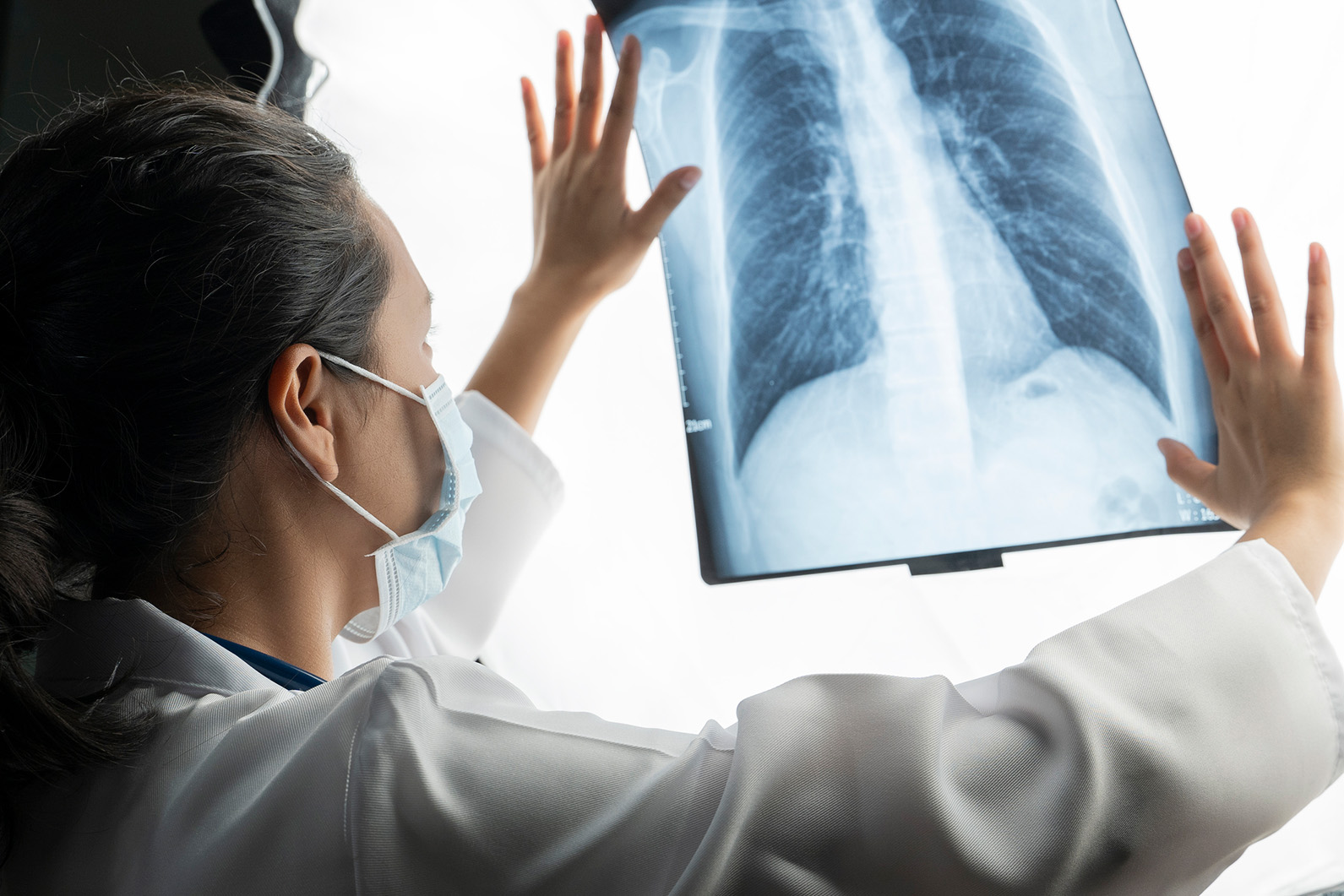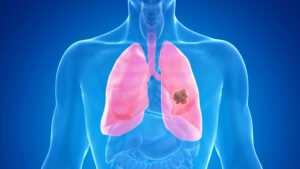Lung Carcinoid Tumors
Lung carcinoid tumors are rare malignancies in the lung that occur when neuroendocrine cells grow out of control.


How Serious is a Carcinoid Lung Tumor?
Cancer is not to be taken lightly, no matter the type. The seriousness of a carcinoid lung tumor can vary depending on certain characteristics, including the size and location of tumors. Accounting for only 1-2% of all lung cancers, carcinoid tumors are cancerous and can be life-threatening, or fatal. Generally, carcinoid tumors are considered less aggressive compared to other types of lung cancers.
Carcinoid tumors are a type of tumor made of neuroendocrine cells that can develop in the lungs and other areas of the body, including the intestines, rectum, or pancreas. They tend to grow slowly and produce less noticeable symptoms. Over time, however, the tumor may grow and spread to other organs, causing more serious health issues.
Types of Lung Carcinoid Tumors
The American Cancer Society categorizes carcinoid tumors into two types: typical carcinoids and atypical carcinoids. Distinct characteristics, such as growth rate, help doctors determine the type of carcinoid tumor.
- Typical carcinoids consist of slow-growing, small carcinoid tumors. Smoking does not clearly link to the development of typical carcinoid tumors.
- Atypical carcinoids grow quicker and can spread more easily to other organs. Though uncommon, atypical carcinoid tumors are found more often in smokers than non-smokers.
Determining the carcinoid tumor type helps in treatment planning by providing information about the potential aggressiveness and behavior of the tumors. Patients with atypical carcinoid tumors may require more intensive treatments and vigilant monitoring.
Pulmonary Carcinoid Tumors Causes and Risk Factors
Specialists in the field do not know the exact mechanisms behind the uncontrolled growth of the cells that cause carcinoid tumors, but certain risk factors may put you at a greater likelihood of developing them.
Carcinoid tumors in the lungs often occur in adults, with a majority of cases diagnosed in people between the ages of 40 and 60. In some cases, a family history of the gene disorder Multiple Endocrine Neoplasia Type 1(MEN1) may increase the risk.
Exposure to radiation in the chest area may increase your risk of developing pulmonary carcinoid tumors, especially if you have undergone radiation therapy for other medical conditions.
Smoking is a significant risk factor for many types of lung cancer but is not a major factor in the development of pulmonary carcinoid tumors.
Carcinoid Tumor Symptoms and Diagnosis
Lung carcinoid tumor symptoms can vary and are not always apparent until later stages, emphasizing the importance of early detection. Pulmonary carcinoid tumors can cause persistent cough, shortness of breath, wheezing, and chest pain. Other cancer symptoms, such as fatigue, unintended weight loss, and changes in appetite, can occur.
Some carcinoid tumors can produce hormones that lead to carcinoid syndrome when exposed to the bloodstream. Symptoms of carcinoid syndrome may include fishing of the skin, diarrhea, abdominal pain, and difficulty breathing.
The diagnostic process of lung carcinoid tumors involves imaging scans, tissue biopsies, and blood tests. Imaging scans, such as CTs or MRIs, help identify the presence, size, and location of tumors, while biopsies and blood tests can confirm the presence and type of neuroendocrine cells. A healthcare professional may use a bronchoscope or endoscope to visualize and collect samples.
For more information, fill out a free case evaluation form today.
Treatment Options
Treatment options for carcinoid lung tumors could include surgical removal of the tumor, medications to control symptoms, and other interventions such as radiation therapy and chemotherapy.
Removal of a portion of the lung (segmentectomy) or an entire lobe (lobectomy) can occur in the treatment of localized carcinoid tumors. In some instances, the removal of an entire lung (pneumonectomy) may be necessary.
The prognosis can be relatively favorable, especially for localized tumors detected and treated early. Patients often undergo regular monitoring and follow-up care to manage the progression of the tumor.
Living with Carcinoid Tumors
Living with lung carcinoid tumors involves managing both the physical and emotional aspects of the condition. Patients with carcinoid tumors live with challenges and have to make adjustments along the way. Maintaining a high quality of life can happen by following the prescribed treatment plan and attending regular medical appointments to monitor treatment effectiveness.
As a lung carcinoid tumor patient, you may need to undergo lifestyle changes to manage symptoms. Your doctor will likely suggest you maintain a well-balanced diet to support overall health and engage in regular physical activity. Being flexible and adapting to these changes can help.
Knowledge is empowering. Learn about lung carcinoid tumors, treatment options, and potential side effects to make informed decisions and reduce anxiety. It can help to be honest with your fears, concerns, and expectations with your support network and healthcare team.
Coping Strategies and Support
Coping with carcinoid tumors or any other disease can be emotionally hard to deal with. You can seek support by connecting with friends, family, or support groups to cope with emotional challenges. Consider counseling or therapy if needed.
Organizations like the Carcinoid Cancer Foundation provide information, resources, and support for individuals and families affected by carcinoid tumors. Local cancer centers and online communities often offer support groups and forums dedicated to providing resources to carcinoid tumor patients and their families.
Navigating lung carcinoid tumors is a collaborative effort that involves both medical and emotional support. We are here to help you answer tough questions about treatment costs, potential compensation, and any other questions you may have related to medical or financial assistance due to a lung cancer diagnosis. Reach out to our team to get the help you need.


